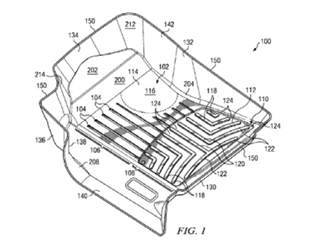After a jury found infringement of two patents and awarded almost $2.2 billion in damages, the US Court of Appeals for the Federal Circuit reversed the infringement finding for one asserted patent, vacated the damages award for the other asserted patent, and reversed the district court’s refusal to allow the alleged infringer to add a licensing defense. VLSI Technology LLC v. Intel Corporation, Case No. 22-1906 (Fed. Cir. Dec. 4, 2023) (Lourie, Dyk, Taranto, JJ.)
VLSI sued Intel for infringement of two patents. During the litigation, third party Finjan underwent a change in control after which it was controlled by the same parent entity as VLSI. Intel sought to amend its answer to add a licensing defense based on the broad definition of “affiliates” in its license agreement with Finjan, arguing that as a consequence of the change in control Intel was licensed to patents owned by VLSI. The district court denied the motion to amend.
At trial, the jury found literal infringement of one patent and infringement under the doctrine of equivalents (DoE) for the other patent. The jury awarded $2.2 billion in damages. Intel appealed.
The patent that the jury found infringed under the DoE was directed to devices, such as computer processors, having the ability to operate at a variety of frequencies. Depending on the operating conditions, a master device can provide a trigger input to a controller in response to a desired increase in device performance, and the controller can then adjust the clock frequency accordingly. Intel argued that the evidence of equivalents presented to the jury was legally insufficient to support a finding of infringement.
The Federal Circuit agreed and reversed the jury’s finding under the DoE. The Court stressed that for a patent owner to prevail under a DoE assertion, it must provide “particularized testimony and linking argument as to the insubstantiality of the differences between the claimed invention and the accused device.” While VLSI’s proof of equivalence was limitation specific, the testimony provided during the trial was insufficient to explain the “insubstantiality” of the differences between the claims and the Intel products. The Court specifically cited trial testimony by VLSI’s expert, who characterized the differences as “a difference of where an engineer draws the line . . . it’s a design choice.” In its explanation of why the analysis and testimony was insufficient, the Court explained that “[i]t is not enough [] to say that the different functionality-location placements were a ‘design choice.’ . . . VLSI had to prove—with particularized testimony and linking argument—that the elements of the Intel arrangement were substantially the same as the elements of the claimed arrangement. But VLSI offered no meaningful testimony doing so.”
Intel also appealed the damages award based on the patent that was found to be literally infringed. That patent was directed to certain features that provide separate scalable (as opposed to fixed) power supply voltages for both processors and memory devices, depending on the need of the device. VLSI’s expert presented a calculation of damages based [...]
Continue Reading
read more

 Subscribe
Subscribe



